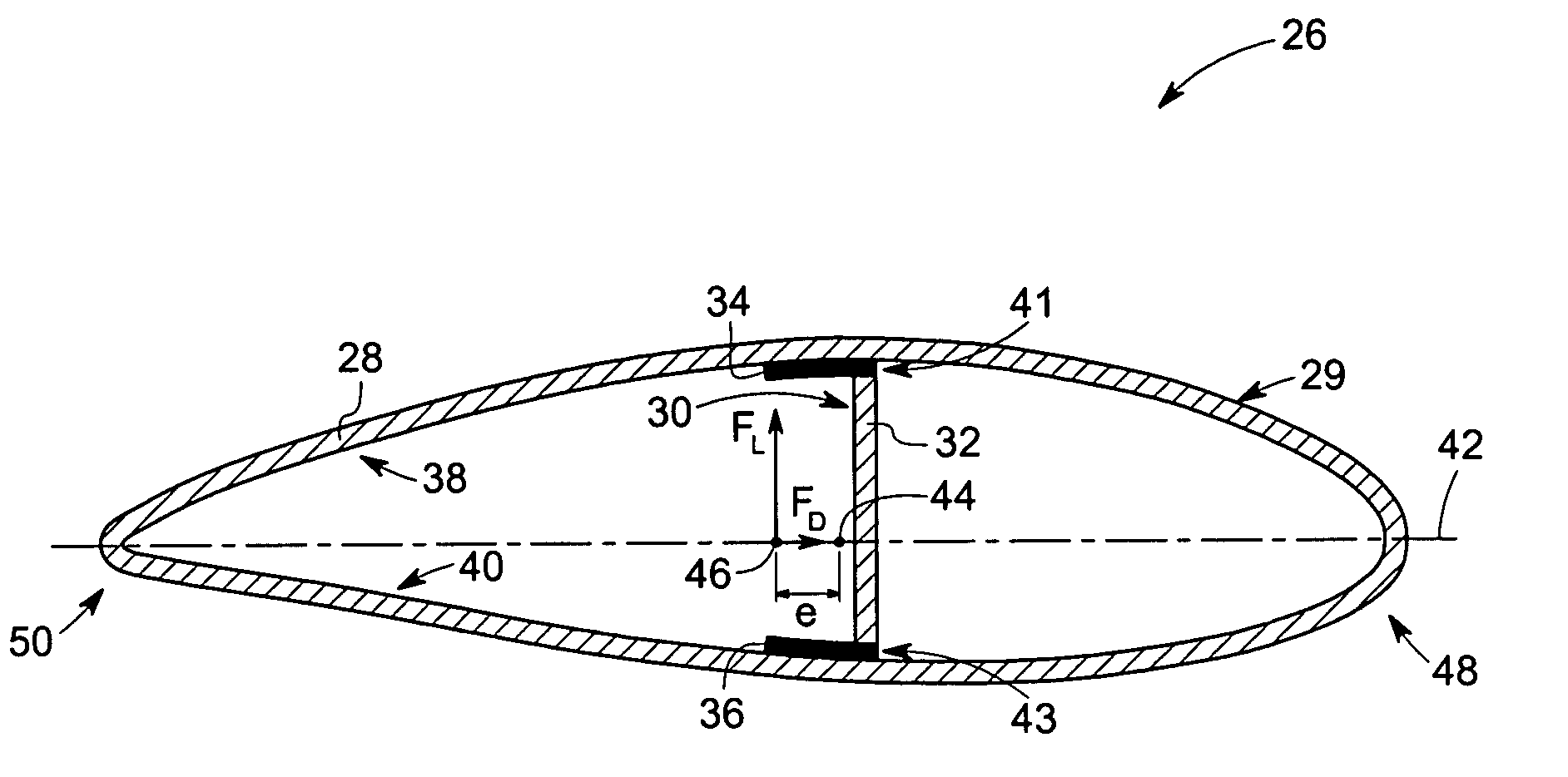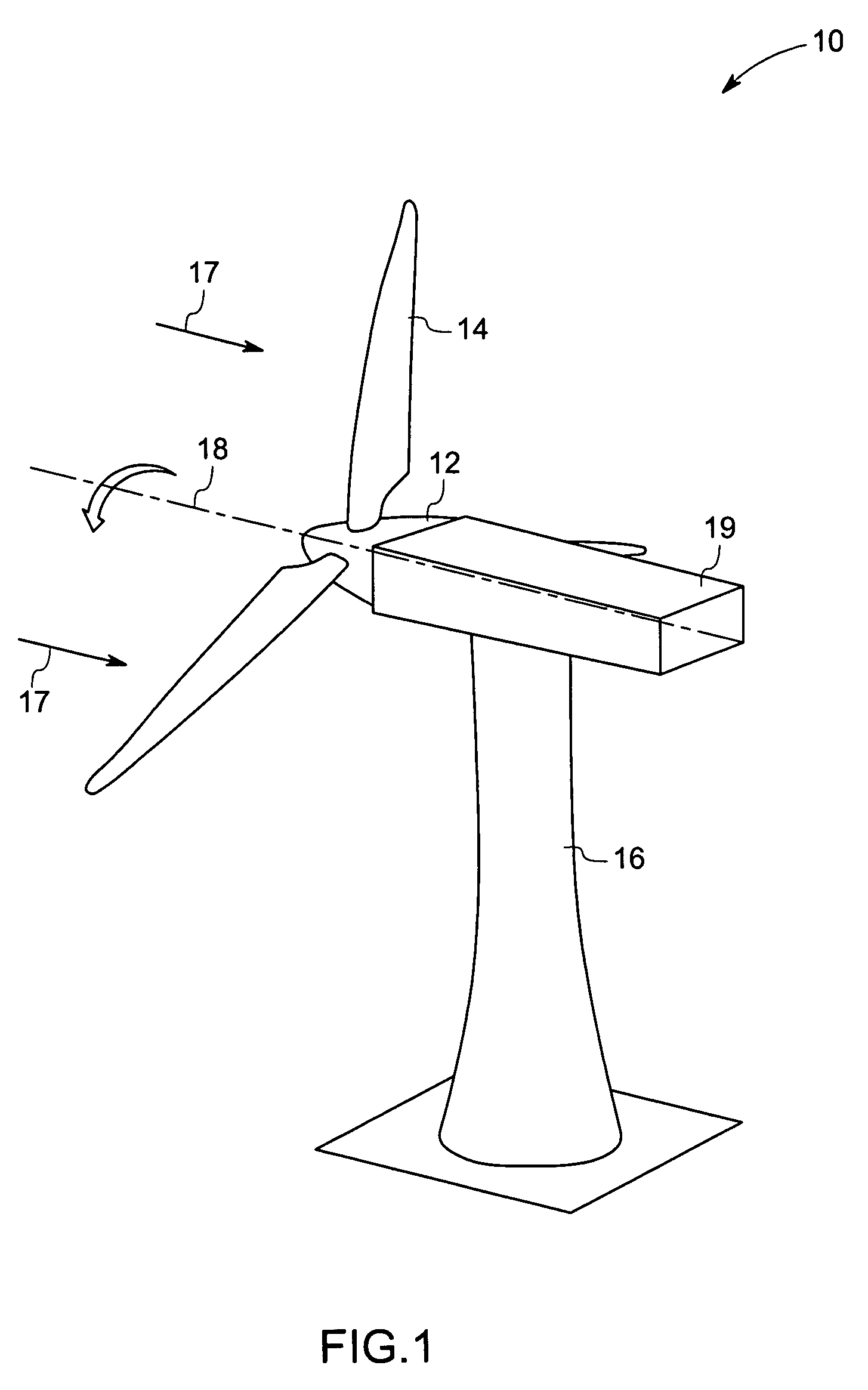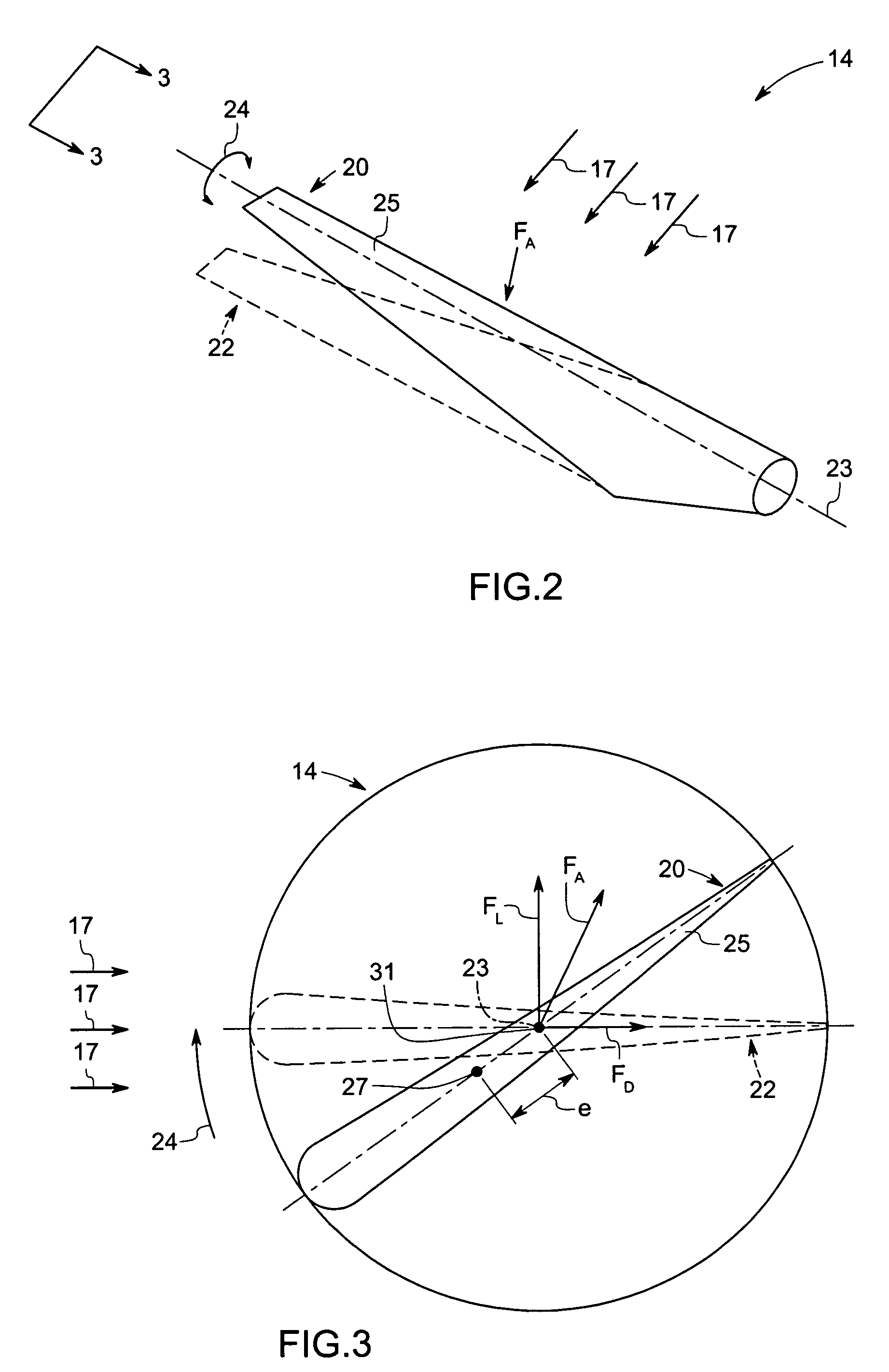System and method for passive load attenuation in a wind turbine
a technology of wind turbines and passive load attenuation, which is applied in the field of wind turbines, can solve the problems of affecting not only the average wind load on the blades, the fatigue of the rotating blades, and the damage to the wind turbine blades
- Summary
- Abstract
- Description
- Claims
- Application Information
AI Technical Summary
Benefits of technology
Problems solved by technology
Method used
Image
Examples
Embodiment Construction
[0018]The technique described below provides a system and method for improving wind turbine performance by alleviating bending and shear loads on the wind turbine blades. The present technique employs the use of a passively adaptive wind turbine blade that modifies its aerodynamic configuration based on the extent of wind loading on the blade, thereby attenuating cyclic loading of the blade due to turbulence in wind velocity. As discussed in detail below, certain embodiments of the present technique employ a variety of internal support structures, such as C-shaped, Z-shaped, and unsymmetrical structures, which effectuate a twisting motion of the turbine blades in response to bending caused by strong turbulent / cyclic winds. This twisting motion causes the turbine blades to become more closely aligned with the direction of the wind, thereby reducing wind loads on the turbine blades. This reduced cyclic loading, in turn, extends fatigue life of the blade as well as other load bearing s...
PUM
 Login to View More
Login to View More Abstract
Description
Claims
Application Information
 Login to View More
Login to View More - R&D
- Intellectual Property
- Life Sciences
- Materials
- Tech Scout
- Unparalleled Data Quality
- Higher Quality Content
- 60% Fewer Hallucinations
Browse by: Latest US Patents, China's latest patents, Technical Efficacy Thesaurus, Application Domain, Technology Topic, Popular Technical Reports.
© 2025 PatSnap. All rights reserved.Legal|Privacy policy|Modern Slavery Act Transparency Statement|Sitemap|About US| Contact US: help@patsnap.com



